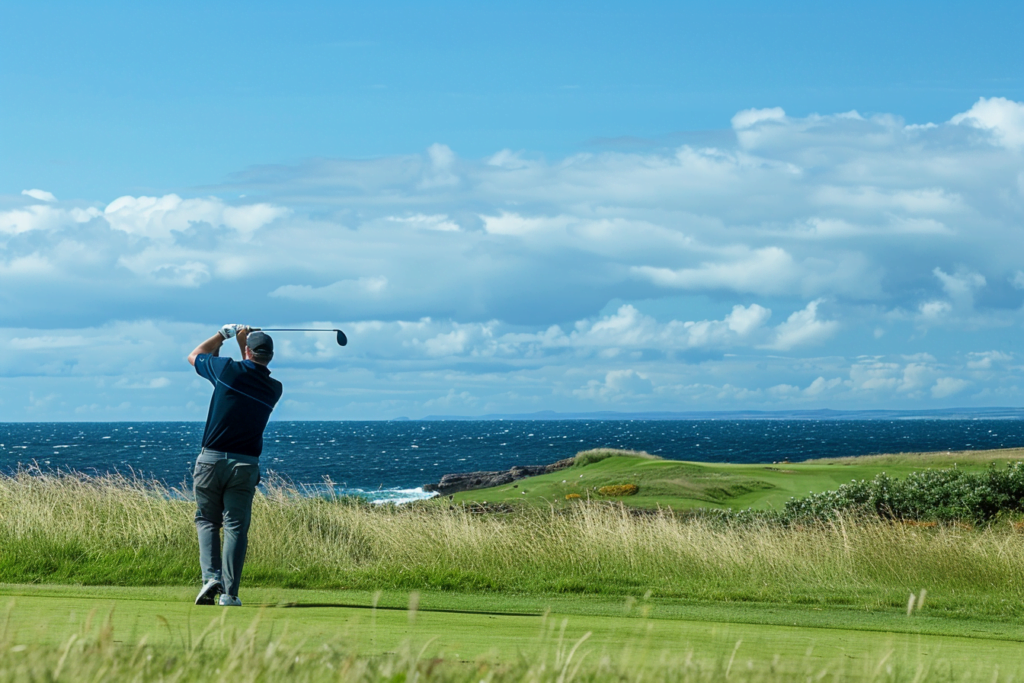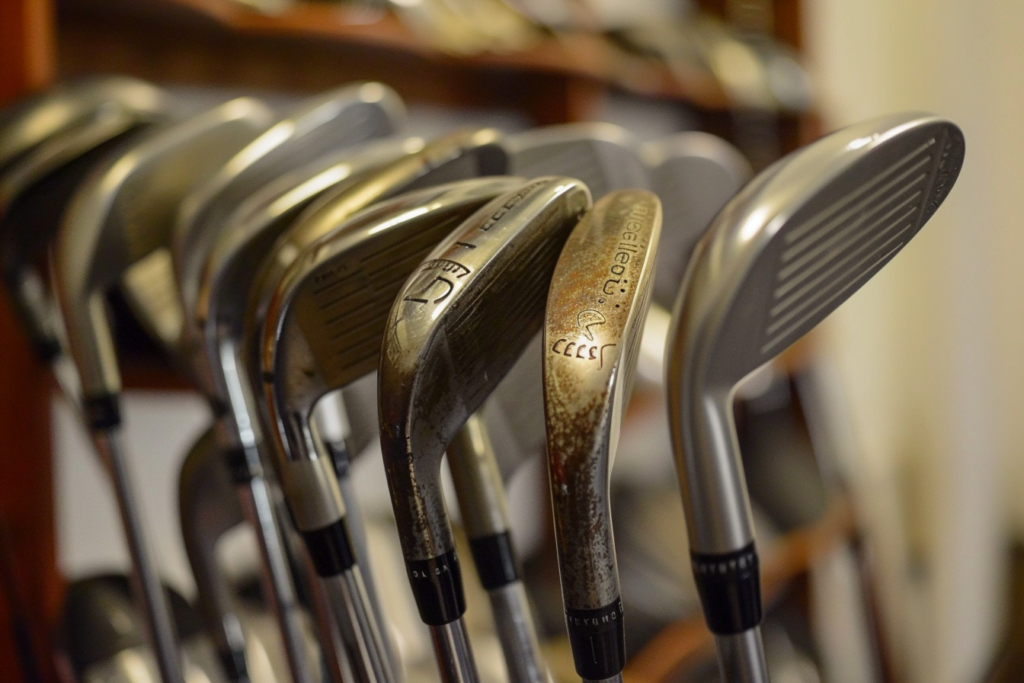
Mastering the stinger is a valuable skill for any golfer looking to keep their ball flight low, especially in windy conditions or when obstacles need to be navigated. Characterised by a piercing trajectory and reduced spin, the stinger shot is favoured by many skilled players for its precision and control. With the right technique and club selection, golfers can achieve this lower ball flight and maintain greater control over their shots.
Contents
It is important to select the appropriate club; a common misconception is to reach for the longest iron in the bag, but a 5-iron is often the ideal choice for achieving the stinger’s signature flight. The key lies in the swing: it begins with leading the downswing with the lower body, keeping the shoulders rotating smoothly – this is not to be mistaken for a punch shot. Golfers must ensure the clubface contacts the ball squarely, with a focus on striking down on the ball to generate the ideal low trajectory.
The stinger demands precision in ball positioning and body movement. Golfers should tee the ball slightly higher to facilitate the necessary descending blow, which helps establish the stinger’s low flight while maintaining adequate control. However, balance is crucial – golfers must stay centered as they execute this shot, ensuring the club remains close to the ground post-impact for optimal results.
Understanding the Stinger Shot

The stinger shot is a specialised technique in golf designed for optimal control and performance in certain playing conditions.
Definition and Purpose
A stinger, or low-flying shot in golf, is characterised by its low trajectory and reduced spin. Its primary purpose is to maintain control of the ball in windy conditions and achieve greater distance by minimising air resistance and maximising roll-out upon landing.
Benefits of a Stinger in Golf
The stinger offers several benefits on the golf course:
- Wind Resistance: The shot’s low flight path helps it to remain stable and less affected by headwinds.
- Control: A well-executed stinger tends to roll straighter and longer, providing an advantage on firm fairways.
- Versatility: Players can use the stinger off the tee or for long approach shots, making it a versatile addition to any golfer’s skill set.
Fundamentals of the Swing
In executing a stinger, one’s posture and stance, as well as the grip on the club and ball positioning, are critical components for a successful shot.
Stance and Posture
A golfer should adopt a stable stance with feet shoulder-width apart, providing a solid foundation for the swing. The posture is equally vital; one must maintain a slight bend at the hips, with the spine straight and the body tilted forward from the waist. This positioning aids in achieving the desired ball trajectory.
Grip and Ball Position
The grip should be firm, yet not overly tight to allow for control throughout the swing. For a right-handed golfer, the left hand grips the club first, with the thumb pointing down the shaft, followed by the right hand with an overlapping grip. Ball position is equally crucial; placing the ball slightly back in the stance, closer to the right foot, promotes a lower ball flight and a descending strike.
Executing the Stinger

When golfers execute the stinger, precision in their swing technique and shot trajectory control are vital for achieving the desired low, penetrating ball flight.
Swing Technique
In a stinger, the golfer’s swing is adjusted to create a lower launch angle. They position the ball slightly back in their stance, typically towards the right foot for right-handed players, which promotes a descending blow. The hands should lead the clubhead at the point of impact, ensuring that the loft of the club is reduced. It’s important to maintain a forward-leaning shaft angle through impact.
- Positioning: Ball back in stance, closer to trail foot
- Impact: Hands lead the clubhead, de-loft the club
- Shaft Angle: Forward lean maintained through impact
Shot Trajectory Control
Controlling the trajectory of a stinger involves manipulating the club’s loft and the angle of attack. Golfers achieve this by choosing a long iron, typically a 2-iron or 3-iron, which inherently has less loft. They must then focus on maintaining a smooth, controlled swing pace, ensuring not to over-swing which can introduce excess spin and height.
- Club Selection: Low-lofted long iron (2-iron or 3-iron)
- Swing Pace: Smooth and controlled
- Spin and Height: Minimized for a flatter trajectory
Equipment Considerations

Choosing the right equipment is critical when attempting to hit a stinger. Golfers should consider both their club selection and the type of golf ball that will best suit this specific shot.
Club Selection
For a stinger, the ideal choice is often a long iron, such as a 2-iron to a 5-iron. These clubs provide the necessary loft and control. The golfer must ensure that the club has enough weight in the head to promote a low ball flight while still achieving ample distance.
- Preferred Clubs: Typically a 2-iron – 5-iron.
- Club Head: Sufficient weight for low trajectory.
- Shaft: A stiffer flex can aid in control.
Golf Ball Factors
The choice of golf ball can influence the flight and roll of a stinger shot. A ball with a lower spin rate helps maintain a piercing ball flight against the wind and offers more roll upon landing. Selecting a high-performance ball that complements a golfer’s swing speed and the desired shot shape is essential.
- Spin Rate: Lower for reduced lift and more roll.
- Compression: Matched to the golfer’s swing speed.
- Construction: Multilayer balls for control and feel.
Practice Drills and Tips
Mastering the stinger shot requires regular practice with specific drills that promote consistency and adaptability in various weather conditions. These drills can help golfers fine-tune their technique for this low-trajectory shot.
Drill for Consistency
To develop a consistent ball position, golfers should use the tee drill. One places a tee at the desired ball position during setup. Through repeated practice, one ensures that the ball is struck with precision each time. This drill helps establish the right ball position for the stinger shot, crucial for controlled power.
- Setup: Place a tee in the ground where the ball should be positioned.
- Execution: Hit balls from the tee, focusing on maintaining a consistent position each time.
Adjusting for Weather Conditions
Adapting to different weather conditions is essential for the stinger shot. One must learn to modify the ball flight based on wind direction and strength. For headwinds, focus on hitting the ball with less loft to keep it under the wind.
- Headwind: Utilise a stronger grip and steeper swing path.
- Tailwind: Slightly increase the loft to capitalise on the added push from behind.
By practising these drills, a golfer can enhance their ability to hit a stinger more reliably and under a variety of conditions.
Frequently Asked Questions
The stinger is a low-flying golf shot designed to minimise wind resistance and maximise control. This section answers common questions on how to execute a stinger with various golf clubs.
What is the technique for executing a stinger using a driver?
Executing a stinger with a driver involves teeing the ball lower, placing it further back in one’s stance, and using a shorter backswing to maintain control and a shallow angle of attack.
Which adjustments are needed to play a low stinger with a driver?
To play a low stinger with a driver, golfers need to adjust their stance by moving the ball position back and choosing a driver with less loft. This helps in achieving the desired low trajectory.
Can you explain the method to hit a stinger using a 5 iron?
Hitting a stinger with a 5 iron requires placing the ball back in the stance and focusing on a controlled swing that ensures a descending blow, compressing the ball for a lower flight path.
What are the steps to perform a stinger shot with a 2 iron?
When performing a stinger shot with a 7 iron, the golfer should focus on playing the ball slightly back in the stance and keeping the hands ahead at impact to produce the necessary low ball flight.
How does one manage to hit a stinger using a hybrid club?
To hit a stinger using a hybrid club, one should place the ball slightly back in the stance and maintain a smooth swing with hands leading the clubhead through impact to keep the flight low.
What distinguishes a stinger from a punch shot in golf?
A stinger is purposely hit to fly low with minimal spin keeping control in windy conditions, whereas a punch shot is played under branches or obstacles and might not necessarily have a low trajectory.

